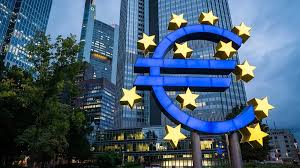Slight Increase in Eurozone Inflation Supports Expectations of Interest Rate Stability

Eurozone inflation recorded a slight increase last month, reaching 2.2% in September compared to 2.0% in August, driven primarily by rising service prices and a less severe decline in energy costs. This reading was in line with economists' expectations, according to data from the European statistics office "Eurostat" released on Wednesday.
In an indication of continued inflationary pressures, the core inflation rate _which excludes volatile food and energy prices_ remained at 2.3% despite rising service prices.
This inflationary trend reinforces expectations that the European Central Bank will keep interest rates unchanged at its next meeting, as a source within the bank stated: "The data confirms that we are on the right track with the current wait-and-see policy."
President Christine Lagarde confirmed this direction on Tuesday, noting that "inflation risks are under control in both directions." She added in her remarks: "With interest rates now at 2%, we are in a good position to act if risks change or new shocks threaten our target."
Although the bank has spent the past four years facing excessive inflation, concern is now shifting towards the possibilities of excessive declines in inflation. The bank expects the rate to drop to 1.7% next year, raising fears that low price growth may become entrenched as it did in the decade prior to the pandemic.
The European economy faces additional pressures from weak data in the industrial sector, investment, and household consumption, along with obstacles arising from U.S. tariffs.
While some decision-makers see the September data as an argument against any further rate cuts, the hawkish wing of the bank _which currently holds the majority_ appears more optimistic about the economy's ability to withstand challenges. This stream is based on indicators of recovery in the industrial sector and a strong labor market, with expectations of growth support through increased defense spending.
In this context, it seems that the European Central Bank will continue its wait-and-see policy, keeping interest rates at their current levels after cutting them by a full two percentage points during the first half of the year, awaiting greater clarity on the economic path and inflation risks.